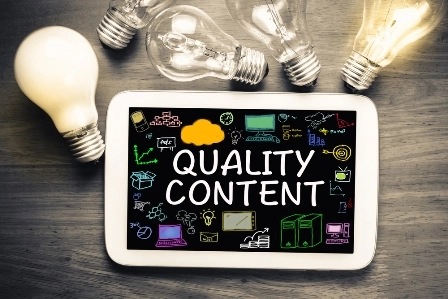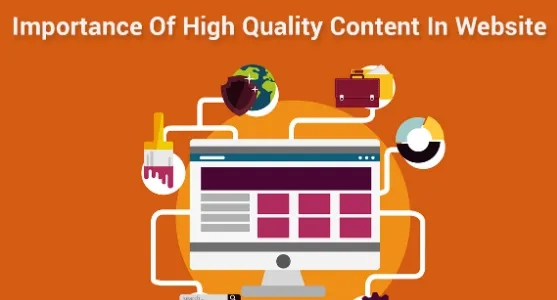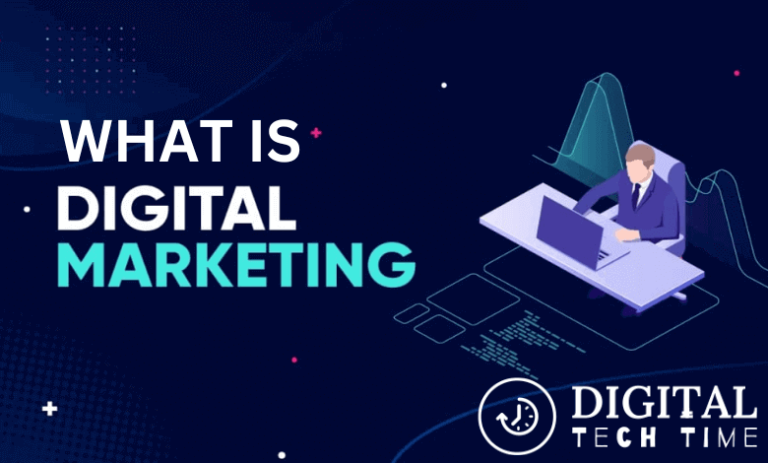Ultimate Guide to Unlocking the Power of UploadArticle: Creating High-Quality Content
An effective online presence in today’s digital age demands driving results. This feat could only be realized with quality content. Whether as a blogger, small business owner, or marketer, the effectiveness of your content creation in being engaging, informative, and relatively polished will set you apart in appealing to your audience’s attention and driving tangible results.
Quality content will help you build up your expertise or authority, as well as in search engine optimization, social media engagement, and solid relations with your readers. High-grade content offers endless opportunities for brands to place themselves at the top among trusted authorities within industries.
Table of Contents
What Is Quality Content?

Quality content typically refers to content that is useful, accurate, reliable, and relevant to its intended audience. It is well-researched and thoughtfully produced to provide genuine value—the exact information or solutions that readers are seeking.
But how do we measure content quality?
There’s no universal process to measure a content quality score. Each website, publisher, or platform has its definition and standards for quality content.
From a brand’s perspective, content should:
- Align with your brand’s voice and goals
- Reflect your brand’s identity and values
- Meet the specific needs and preferences of your target audience
- Drive engagement and conversions with compelling and persuasive messaging
- Enhance your brand’s reputation and authority within the industry
Now, let’s understand the meaning of high-quality content.
From Google’s point of view, quality content is helpful, reliable, and people-focused:
Google’s automated ranking systems are designed to present helpful, reliable information in the top search results that are primarily created to benefit people, not to gain search engine rankings.
So, quality content should:
- Satisfy user intent—provide the information or solution the user is seeking
- Provide original details, research, or analysis
- Reflect the creator’s expertise and first-hand experience on the subject
- Be relevant and comprehensive enough to answer users’ questions effectively
- Offer substantial value compared to other pages
- Have a good page experience (e.g., page loading speed, readability, mobile experience)
In short:
It is focused on providing real value to the seeker or searcher.
Suppose you want Google to rank your content above other content. In that case, you must ensure that it helps users reach their aims positively and securely.
From a holistic viewpoint, you must ensure that your content meets three objectives: your brand’s, Google’s, and the user’s.
The Importance of High-Quality Content

Content is at the heart of any digital success today and serves bloggers, small business owners, and marketing pros alike. To make a real difference in capturing your audience’s attention and driving tangible results, you must create engaging, relevant, and aesthetic content.
High-quality content will help you beat the competition, build authority and credibility, and form a stepping stone toward search engine optimization, social media engagement, and long-term relations with readers. Create top-notch content, and watch the possibilities for positioning your brand as an authority in its respective industry opens up.
Understanding Your Target Audience

Before you go about producing your content, it’s essential to have a good understanding of your target audience. Who are they? What are the pain points, interests, and preferences? This information shall help tailor the content to their needs and preferences by researching and making buyer personas.
- Analyze your existing audience data: Look at your website analytics, social media engagement, and any customer feedback you’ve received to gain insights into your audience’s demographics, interests, and behavior.
- Conduct market research: Gather information about your industry, competitors, and broader market trends to identify potential gaps and opportunities that you can address through your content.
- Create detailed buyer personas: Develop a clear picture of your ideal customer, including their demographics, psychographics, and the challenges they face. This will help you create content that resonates with them on a deeper level.
Conducting Thorough Research
Effective content creation requires a solid foundation of research. Whether you’re writing about a specific topic, industry trend, or product feature, it’s crucial to gather accurate and up-to-date information from reliable sources.
- Utilize credible sources: Refer to industry publications, academic journals, government reports, and other authoritative sources to ensure the accuracy and reliability of your information.
- Stay up-to-date with the latest trends: Monitor industry news, social media discussions, and emerging technologies to identify the most relevant and timely topics for your audience.
- Gather insights from your own experiences: Draw from your expertise, customer interactions, and observations to provide unique perspectives and valuable insights into your content.
Crafting Compelling Headlines
The headline is the first thing your target audience will read; often, it decides whether or not they will keep reading your material. Develop attention-grabbing, benefit-laden headlines that grab their interest and make them want more of your article.
- Use power words: Incorporate words that evoke emotion, create a sense of urgency, or highlight the benefits of your content, such as “Unlock,” “Discover,” “Secrets,” or “Insider Tips.”
- Leverage numbers and statistics: Numerical headlines often perform well, as they convey specific, tangible information that can grab the reader’s attention.
- Personalize your headlines: Use “you” or “your” to make your headlines more relatable and relevant to your audience.
- Test and iterate: Try different headline variations and use A/B testing to determine which ones resonate best with your audience.
Structuring Your Content Effectively
The structure of your content plays a crucial role in its readability and engagement. Adopt a clear and logical flow that guides your readers through the information seamlessly.
- Start with an engaging introduction: Hook your audience from the very beginning by highlighting the main topic, the benefits they’ll gain, and a glimpse of what they can expect in the article.
- Use clear and concise subheadings: Break your content into manageable sections with descriptive subheadings that make it easy for readers to navigate and skim through the information.
- Incorporate visual elements: Leverage images, infographics, videos, and other visual aids to enhance the overall presentation and make your content more engaging and memorable.
- Conclude with a strong call to action: End your article with a clear and compelling call to action that encourages your readers to take the next step, whether it’s signing up for a newsletter, downloading a resource, or exploring your products or services.
Incorporating Relevant Keywords
Search engine optimization is about optimizing your content for today’s digital landscape. It involves strategically incorporating relevant keywords into your content, which increases your chances of getting more qualified traffic to your website.
- Conduct keyword research: Use tools like Google Keyword Planner, Ahrefs, or SEMrush to identify the most relevant and high-performing keywords for your industry and target audience.
- Incorporate keywords naturally: Weave your target keywords into your content in a way that enhances the overall readability and flow rather than stuffing them in unnaturally.
- Optimize your meta tags and descriptions: To boost your SEO efforts further, ensure that your page titles, meta descriptions, and image alt text include your target keywords.
Optimizing Your Content for SEO

Beyond incorporating keywords, there are several other SEO best practices you can implement to enhance the visibility and performance of your content.
- Optimize your page structure: Ensure that your content is organized in a clean and logical hierarchy, with proper use of headings, subheadings, and paragraph structure.
- Improve page load speed: Optimize your images, minimize the use of heavy scripts, and leverage caching and content delivery networks to ensure your pages load quickly.
- Ensure mobile responsiveness: With the increasing importance of mobile-friendly content, make sure your website and content are optimized for seamless viewing on various devices.
- Build backlinks: Engage in strategic link-building efforts, such as guest posting, influencer outreach, and collaborations, to earn high-quality backlinks that can boost your content’s authority and visibility.
Using Visual Elements to Enhance Your Content
It enhances your content’s engagement and impact by incorporating any visually pleasing element. From images and infographics to videos or even animated GIFs, they help break up the text, convey detailed information more effectively, and make the content more memorable.
- Select high-quality, relevant visuals: Choose images, videos, and other visual elements that are directly relevant to your content and enhance the overall user experience.
- Optimize your visuals for SEO: Ensure that your image file names, alt text, and captions include relevant keywords to improve their discoverability and contribute to your overall SEO efforts.
- Leverage data visualization: Transform complex data and statistics into engaging infographics, charts, or interactive visualizations to make the information more digestible and impactful for your readers.
Proofreading and Editing Your Content
Even the best-researched and technically sound content could need a rigorous cycle of proofreading and editing. This process will ensure that your content is free of grammar mistakes, typographical errors, and inconsistencies and will also afford you scope for refinement and tightening of your writing.
- Conduct multiple rounds of editing: Review your content numerous times, focusing on different aspects such as grammar, clarity, flow, and overall coherence.
- Seek external feedback: Enlist the help of a trusted editor, proofreader, or even a colleague to provide a fresh perspective and identify any areas for improvement.
- Use editing tools: To assist in the editing process, leverage tools like Grammarly Hemingway Editor, or the built-in spell-check and grammar features in your word processor.
Promoting and Distributing Your Content
While producing high-quality content is half the battle, getting this out to the target audience is the other half. Develop a comprehensive content promotion and distribution strategy to ensure maximum visibility and impact for your work.
- Leverage social media: Share your content across relevant social media platforms, such as LinkedIn, Twitter, and Facebook, and engage with your followers to drive further engagement.
- Explore email marketing: Build an email list and regularly send your audience updates, newsletters, or exclusive content to keep them engaged and coming back for more.
- Collaborate with industry influencers: Reach out to relevant industry influencers, experts, or complementary businesses to explore guest posting, co-promotion, or other mutually beneficial partnerships.
- Optimize for search engines: Ensure your content is properly optimized for search engines, including the use of relevant keywords, meta tags, and schema markup, to improve its visibility in search results.
Analyzing and Measuring the Success of Your Content
Regularly analyzing your content’s performance is crucial for understanding what’s working, what needs improvement, and how to refine your content strategy going forward.
- Utilize analytics tools: Leverage platforms like Google Analytics, HubSpot, or Semrush to track key metrics such as website traffic, engagement rates, conversion rates, and the overall impact of your content.
- Identify your top-performing content: Analyze which of your articles, blog posts, or other content pieces are resonating best with your audience and understand the factors that contribute to their success.
- Continuously iterate and improve: Use the insights gained from your analytics to make data-driven decisions and refine your content creation and promotion strategies over time.
Read Also: How to Evaluating Website Design Effectively
Frequently Asked Questions (FAQs)
Q: How often should I publish new content?
A: The optimal frequency for publishing new content will depend on your industry, your audience’s preferences, and your overall content strategy. As a general guideline, aim to publish new content on a consistent schedule, whether that’s weekly, bi-weekly, or monthly.
Q: What are the best practices for repurposing content?
A: Repurposing your existing content can be a highly effective way to maximize its reach and impact. Some best practices include turning blog posts into videos or podcasts, converting longer-form content into bite-sized social media posts, and updating and republishing evergreen content.
Q: How can I improve my content’s engagement rates?
A: To boost engagement, focus on creating content that is highly relevant and valuable to your target audience. Incorporate interactive elements like polls, quizzes, or calls to action, and encourage your readers to share their thoughts and experiences in the comments section.
Conclusion
These strategies and best practices will help you unlock UploadArticle’s real power and create content that will set you apart from the competition. The key is to understand what your audience wants, do deep research, and maintain the line and quality of your productions, which should bring real value to your readers.
Ready to take your content creation to the next level? Integrate with UploadArticle today and watch your content strategy’s potential unfold. Our high-powered, advanced platform and expert guidance were designed to help you create top-tier content that produces accurate business results.







